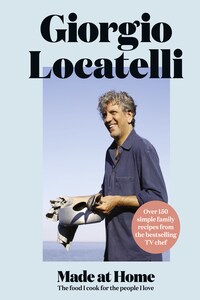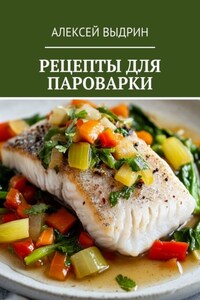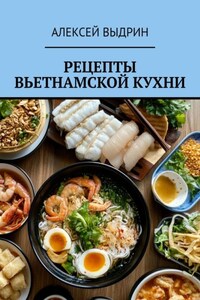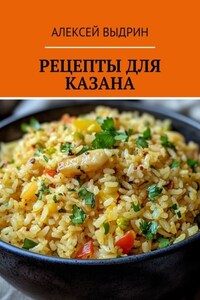Copyright
4th Estate
An imprint of HarperCollinsPublishers 1 London Bridge Street London SE1 9GF www.4thestate.co.uk
This eBook edition published by 4th Estate in 2017
Copyright text © Giorgio Locatelli 2017
All photographs © Lisa Linder 2017
Design and art direction: BLOK
www.blokdesign.co.uk
Giorgio Locatelli asserts the moral right to be identified as the author of this work.
A catalogue record for this book is available from the British Library.
All rights reserved under International and Pan-American Copyright Conventions. By payment of the required fees, you have been granted the non-exclusive, non-transferable right to access and read the text of this eBook on-screen. No part of this text may be reproduced, transmitted, downloaded, decompiled, reverse engineered, or stored in or introduced into any information storage and retrieval system, in any form or by any means, whether electronic or mechanical, now known or hereinafter invented, without the express written permission of HarperCollins Publishers.
Source ISBN: 9780008100513
Ebook Edition © September 2017 ISBN: 9780008100520
Version: 2017-08-18
Contents
Cover
Title Page
Copyright
Dedication
The places I call home
Seasonal salads and vegetables
Simple soups
Panini, crostini, pies and other snacks
Pasta, rice and pizza
Favourite fish and seafood
Grilled meats, roasts and stews
Cakes, treats and ice creams
Index
Acknowledgements
About the Publisher
The places I call home
Home means many things to me. Home is north London with my wife, Plaxy, and now grown-up ‘kids’, Jack and Margherita, who come and go but still expect to raid the fridge as soon as they walk through the door. When Plaxy and I are at home on our own, the meals we share are about simply cooked fish, vegetables and salads, and many of our favourite recipes are included here. But when Margherita was small, much of our cooking had to begin with something that she could eat, since shortly after she was born we discovered that she had an allergy to around 600 foods, especially fish, tomatoes and eggs. So for years we could never have fish or tomatoes in the kitchen, and ingredients like almonds would be kept in jars in separate labelled cupboards to keep her safe. We never wanted her to feel different, so we would always find a way of making something for her that looked like what everyone else was eating, even if the ingredients varied. But for me, that should always be at the heart of all home cooking: the idea that you adapt and change according to what you buy fresh that is in season, what you have in your cupboard and your fridge, and who you are cooking for.
Home, for me, is also Corgeno in Lombardy, northern Italy, where my whole family was involved with my uncle’s restaurant, La Cinzianella, on the shore of Lake Comabbio, so my grandmother was in charge of the cooking in our house while my grandfather raised rabbits and chickens and grew vegetables in the garden. Many of the meals that my grandmother cooked, I still cook at home for my own family, and when I do, it is as if I am back in Corgeno with her and my grandad again.
According to the day of the week, we might have risotto with saffron, pasta with homemade passata, fish from the lake, and once a week fresh prawns; or stews, such as osso buco or my favourite, spezzatino, made with beef, potatoes and peas, according to whatever pieces of meat Stefanino, the village butcher, had kept for my grandmother.
When my elder brother, Roberto, and I would come home from school there would often be a soup made with my grandmother’s broth and maybe a scallopine to follow: a sliver of pork, veal or chicken, encrusted in breadcrumbs from the big jar in the kitchen and fried. I still think that in a family environment, soup is very important. It is a great comfort food; it doesn’t need so much planning, and you can make a potful and freeze some in a container for next time. If I get home late from the restaurant, or from filming, having tasted so many dishes during the course of the day, all I want is a simple soup to soothe and settle the stomach. Or a simple pasta.
I never tire of a plate of spaghetti with a brilliant tomato sauce, but I often think that while the great advantage of pasta is its familiarity, that is also its worst enemy, because we all have our one or two favourite recipes that we make over and over again, when actually a dish of pasta should reflect the changing seasons. It is a perfect medium for introducing kids to ingredients with different textures and flavours throughout the year.
My grandparents, who had been through the war, never lost the fear that there might come a day when there was no food – something that Jack and Margherita have no reason to understand – but in Europe plentiful food has come at a certain cost to society. There is no doubt that we have to address the problems of eating too much sugar and salt, the way we have made food ‘convenient’ by packing it full of additives, our wastefulness, and the fact that we cannot go on extracting so much from the earth and emitting so many gases. But one huge step is to go back to the essence of home cooking – buying fresh ingredients, preparing them simply, enjoying them with your friends and family, and keeping anything you don’t eat to transform into another meal – and that’s it.









